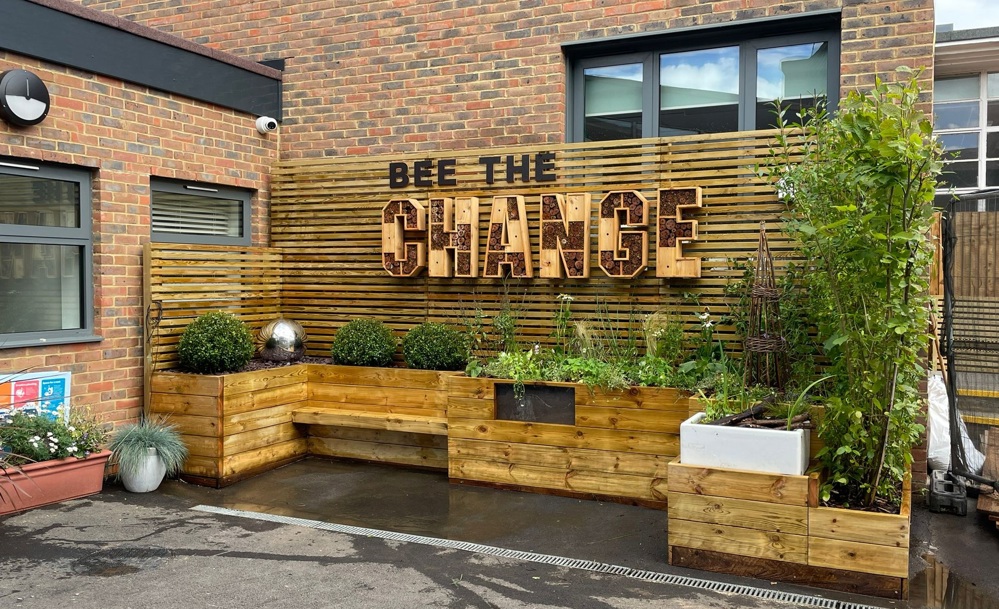Pinner Park Primary School
Project Overview:
 More than 800 school children from Pinner Park Primary School planted hedgerows, a micro-forest, fruit trees, and a wildflower meadow, with the aim of improving and raising awareness of biodiversity for the next generation.
More than 800 school children from Pinner Park Primary School planted hedgerows, a micro-forest, fruit trees, and a wildflower meadow, with the aim of improving and raising awareness of biodiversity for the next generation.
The project is part of a wider biodiversity plan at Pinner Park Primary School. Every pupil was involved in planting either 150m of native hedgerow, a micro-forest, fruit trees, or a section of wildflower meadow.
The project was split into two key steams, a practical planting day known as the ‘Big Dig’ and an educational day with the Bumblebee Conservation Trust.
The Big Dig:
Ground Control provided native trees, saplings, and hedgerows that were planted on-site to create food, homes, and shelter for nature. This included apple, pear, and plum fruit trees for a new orchard - all planted by our volunteers who completed the Big Dig alongside 800 pupils.
The 1,400 trees and plants were chosen to reflect the local soil conditions at the school and are designed to bring biodiversity net gain to the area. Among these are 22 native species of trees and shrubs suited to the heavy clay soil in the area, including Alder, Hazel, Hawthorn, Hornbeam, Oak, Poplar, and Willow. The wildflower meadow is a native mix designed to attract pollinating insects.
The project also involved planting a Micro Forest and creating an outdoor classroom, which will allow pupils to have regular ‘hands-on’ experience with native species and learn about the importance of biodiversity.

Educating our Bumblebee Ambassadors:
Beyond the Big Dig, our teams completed the enabling works and seeding of a wildflower meadow and revisited Pinner Park Primary School to educate their 'Bumblebee Ambassadors' to inspire children to be the next generation of nature's custodians.
Alongside the Bumblebee Conservation Trust, the educational day offered hands-on education in the three newly created habitats. Experts explained why these habitats were chosen and what they do to support bumblebees. The three habitats included:
- Early flowering fruit trees, providing food for early emerging queens
- Wildflower meadows, providing summertime food for worker bees
- Native species planters, providing year-round food for bumblebees
To continue the conversation, and to enable future learning, Ground Control donated the 'Bee The Change Garden', our silver-gilt-winning garden from the RHS Chelsea Flower Show. The garden collaborated with the Bumblebee Conservation Trust to showcase the micro-actions that people and businesses can take in landscape design and management which will improve habitats for bumblebees.

Nick Waldron, Headteacher at Pinner Park Primary School said:
Brian Smith, Group Business Development Director at Ground Control said:

An award-winning planting legacy

Ground Control fundraising for Help for Heroes begins




